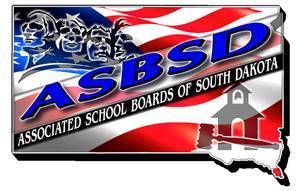On the first Friday in November of 2016, a group charged with tracking compliance with the requirements of the state’s school funding formula reviewed proposed deadlines that could be significant for some school districts on the first Friday in November of 2017.
School Finance Accountability Board members reviewed draft rules for school districts submitting a waiver from the teacher compensation accountabilities requirement set by the new state aid formula that accompanied the approximately $67 million in new money provided to schools through the half cent increase.
Under the state mandates, districts must allocate 85 percent of their total state aid dollars for teacher pay and benefits AND allocate 85 percent of their new revenue percentage increase for certified instructional staff.
SFAB members would have to review submitted waivers no later than November. Based on the drafted rules, waivers submitted must include a district’s Average Teacher Salary, their increase in average teacher salary from Fiscal Year 2016 to Fiscal Year 2017 and the increase in total teacher compensation from FY16 to FY17.
Draft rules stated that any recommended waivers approved by SFAB would be reviewed by the state legislature’s Joint Appropriations Committee and any decision made by the Joint Appropriations committee be relayed to the district within 10 business days.
In addition to reviewing the draft of SFAB rules, the board took a look at a possible teacher compensation accountabilities waiver form.
The proposed form specifies which 85 percent rule requirement the district is requesting be waived, the documents they’ve provided and their reasoning for submitting the request. The form also includes the five factors that would permit the board to review the request:
- Teacher Retirement; or
- Declining Student Enrollment; or
- Change in Budgeted Costs for Benefits; or
- An Unanticipated Resignation in Teacher FTE; or
- Any Un-Foreseen or Extenuating Circumstance.
Tri-Valley Superintendent, and SFAB Chair, Mike Lodmel suggested the form also include the accountability target the district was supposed to meet for comparison to what it actually provided. The board agreed with the suggestion.
Teacher pay data from each district would be in DOE’s annual report, which is finalized in October. With waiver forms tentatively required to be submitted by the first Friday in November in 2017, board members discussed how a district would be notified if they had not met a required target.
Brandon Valley Superintendent, and a SFAB member, Jarod Larson noted the board and DOE should ensure districts are aware of they’ve missed a target by “communicating clearly and concisely” the information from the annual report.
Lodmel echoed Larson’s sentiment and asked if “any sort of safeguard” could be put in place to ensure districts are aware they’ve missed a target. S.D. DOE Director of Finance and Management Tamara Darnall said the department would notify districts if they’ve missed the target following review of the annual report.
“The waiver process offers districts not meeting the state mandated teacher pay requirement an avenue to avoid being penalized state aid, but districts are best to avoid this intricate process,” ASBSD Executive Director Wade Pogany asserted.
“We’d like to see school districts review their finances and if it looks as though they will not meet the requirements, for any reason, they reopen negotiations and ensure the dollars are utilized.”
SFAB members also reviewed the cash balance penalty waiver form and received an update on DOE’s teacher compensation survey. The board is scheduled to meet again on Thursday, December 8 at 1 p.m.
ASBSD will provide updates on the School Finance Accountability Board as they become available.
